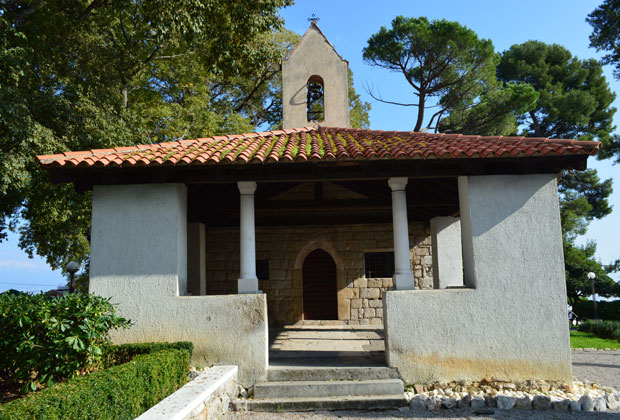
The Church of the Holy Trinity
The Church of the Holy Trinity is a sacred building constructed between the 12th and 13th centuries, and was at first probably dedicated to St. Sunday. It is mentioned in the Quaderna capituli Lovranensis in the second half of the 16th century as one of two of Lovran's cemetery churches.
The second cemetery church mentioned was the church of St. Martin. During the bishop's visitation in 1658, both the Church of St. Martin and the Church of St. Trinity were specifically mentioned as cemetery churches. Even then, the Church of St. Trinity had a porch (known locally as lopica), which today is the only example of such an architectural feature preserved in a church from Lovran's old town. From before the mentioned visitation we find out that the church, which is run by the brotherhood of the same name, owned a pretty altar picture with gold plated carved characters, that it was necessary to make good the neglected grave of the Dessich family inside the church, and that a fence needed to be built around the cemetery "so that no animals can get inside". The church was renovated in 15th century, at which time the frame on the arch of the church portal was embedded with a fragment decorated with early-Romanesque braiding, and which, in its decorations, was very similar to the ornamentation on the upper edge of the Baška Tablet, and which is dated to between the end of 11th and the beginning of 12th century, and which, moreover, is the only specimen of a braiding motif in the Liburnia area. In the interior of the church there are preserved remnants of work by the master Albert of Konstanz from the second half of the 15th century. On the west wall there is an embedded grave stone with the Glagolitic inscription of the priest Gašpar Bekarić from 1595. The grave stone is decorated with the image of a peacock, a symbol of the immortality of the soul.
Trivia
The view through the unusual window in the shape of a candle behind the altar lit the way to the souls, and revealed a view of the sea and the sails on its surface.



